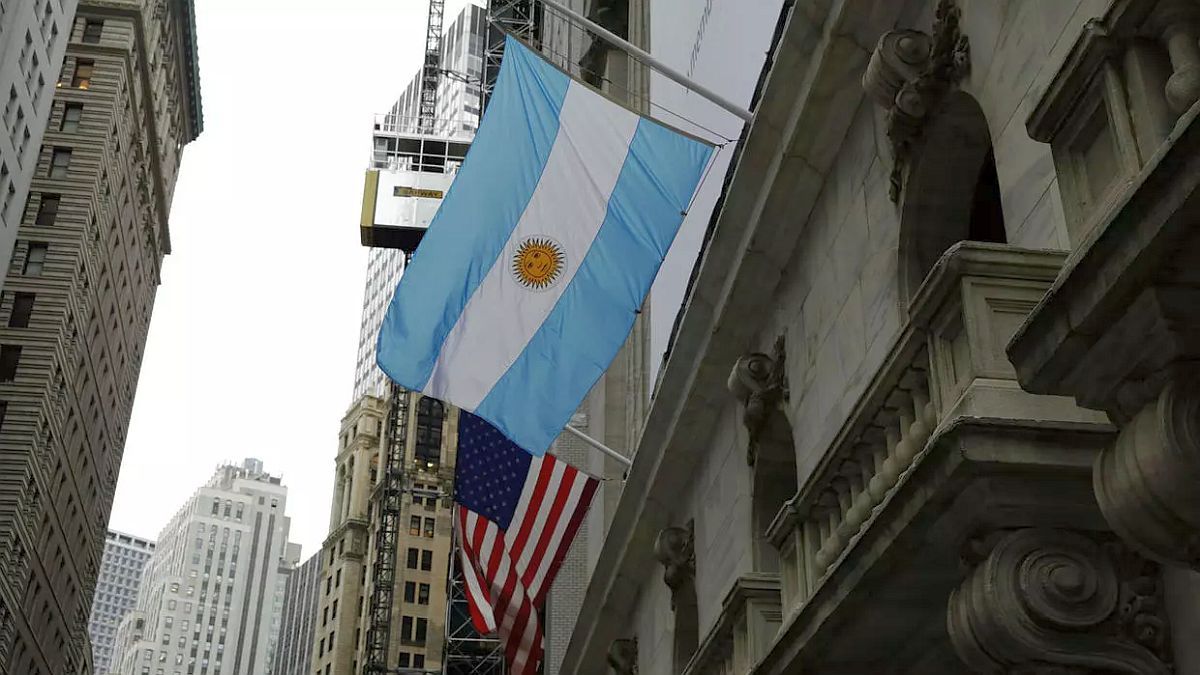For its part, the leading S&P Merval index lost 3.3% to 88,356 points, after gaining 2.1% in the previous three sessions.
The delays in the government closing its agreement to refinance debt with the IMF also played into investor sentiment.
Bonds and country risk
In the fixed income segment, the main bonds in dollars posted losses of up to 3.5% (Global 2030).
For its part, the country risk rose 4.7% (82 units) to 1,821 basis points, the highest since the end of January, before the announcement of Argentina’s pre-agreement with the IMF for the debt.
markets in the world
Wall Street started the day with losses of up to 2% (Dow Jones); and the European stocks fell almost 4% in waves of frantic sellingwhile the Blue chip government bonds, the dollar, the Swiss franc, the Japanese yen and gold all climbed as investors sought safe haven.
Putin said he had authorized what he called a special military operation, although Ukraine and Western governments have labeled it a full-scale invasion.
US President Joe Biden said “severe sanctions” would be imposed on Russia after the attacks, and Europe’s leaders also promised to freeze assets and exclude Russian banks from their financial markets.
The Russian and Ukrainian markets went into free fall.
The ruble weakened almost 7% to 86.98 per dollar, an unprecedented level, there were record drops of 30% on the Moscow stock exchange when it opened after an initial suspension, while Ukraine was forced to suspend the trading its currency when its bonds crashed violently.
“No one expected this and speculation about Putin’s next move will be the main focus of the next few days,” said Hans Peterson, global head of asset allocation at SEB Investment Management.
“But this is happening at a phase of the business cycle that is quite strong,” he added, saying that how energy and commodity prices are doing is also crucial.
The stock slump had started with a 2.6% decline in Asian indices. Europe’s STOXX 600 index then fell 3.9%, hitting its lowest level since May 2021 and more than 10% off January’s all-time high.
Germany’s DAX fell as much as 4.7%, bearing the brunt of the sell-off due to heavy reliance on Russian energy supplies and the amounts its companies sell to Russia.
Rising oil prices helped limit losses in the UK’s FTSE 100, which is heavily weighted in commodities, though it still tumbled 2.3% and futures markets pointed to similar declines for Wall. streets later.
“In the past, when there have been geopolitical crises, there can be very volatile periods in the markets and then it normalizes, but it’s hard to gauge when we’ll get there,” LGIM portfolio manager Justin Onuekwusi said.
Source: Ambito
David William is a talented author who has made a name for himself in the world of writing. He is a professional author who writes on a wide range of topics, from general interest to opinion news. David is currently working as a writer at 24 hours worlds where he brings his unique perspective and in-depth research to his articles, making them both informative and engaging.




